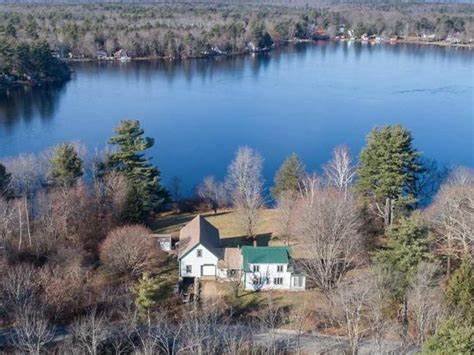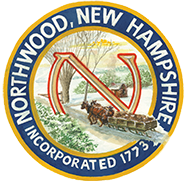NH Facts & Firsts
NH FACTS AND FIRSTS
- Did you know that the alarm clock was invented in Concord, New Hampshire?
- Did you know that the first American summer resort was in Wolfeboro, New Hampshire?
- How about this, the world record for the highest ground wind speed of 372 km per hour (231 miles per hour) was recorded on Mt. Washington on April 12, 1934.
- The first-in-the-nation Presidential Primary election is held in the Granite State every four years. Until the 1992 elections, no candidate had ever won the Presidency without first winning in NH.
- In 1775, New Hampshire became the first state to declare its independence from England.
- The first American in space, Alan Shepard born in Derry, NH. His historic flight was made in 1961.
- The first private citizen in the history of space was Christa McAuliffe, a Concord school teacher. After her death in the Challenger Space Shuttle, a planetarium was built in her honor in Concord.
- Samuel Shelburne of Portsmouth was the first Attorney General of the US. Named to the post in 1789.
Origin of the State Name: New Hampshire was named for Hampshire, England, by Captain John Mason.
Nicknames: New Hampshire has 4 nicknames. The first is the one by which the state is commonly known.
- Granite State: for our extensive granite formations and quarries
- Mother of Rivers: for the rivers of New England that originate in our Mountains
- White Mountain State: for the White Mountain Range
- Switzerland of America: for our beautiful mountain scenery
Capital: Concord is the seat of New Hampshire government. It is centrally located in the state on the Merrimack River. Statehood: New Hampshire became the 9th state on June 21, 1788. It was one of the original 13 colonies.
Population: 1,275,000 (2002 estimates)
Local Government: New Hampshire has 10 counties, 13 municipalities, 221 towns and 22 unincorporated places.
State Seal, Flag and Symbols:
New Hampshire has adopted many symbols over the past 200 years, beginning with the first state seal in 1775. The flag, seal and various symbols are all ways the state identifies itself. They had been adopted by the legislature as symbolic of the state in one way or another.
Motto: Live Free or Die. The motto comes from a statement written by the Revolutionary General John Stark, hero of the Battle of Bennington.
State Seal: In the center is a broadside view of the frigate "Raleigh", in the left foreground is a granite boulder, and in the background a rising sun. A laurel wreath and the words Seal of the State of New Hampshire surround the whole.
Flag: The state flag has the state seal centered on a blue field surrounded by laurel leaves with nine stars.
State Emblem: A replica of the Old Man of the Mountain surrounded with the name of the state above and the motto below. State Symbols: State Bird- The purple finch. Adopted in 1957. State Tree- The white birch. Adopted in 1947. State Insect- The ladybug. Adopted in 1977. State Flower- The purple lilac. Adopted in 1919. State Amphibian- The red-spotted newt. Adopted in 1985. State Animal- The white tailed deer. Adopted in 1983. State Gem- Smokey Quartz. Adopted in 1985. State Mineral- Beryl. Adopted in 1985. State Rock- Granite. Adopted in 1985. State Wildflower- Pink Ladyslipper. Adopted in 1990. State Butterfly. Karner Blue- Adopted in 1992. State Freshwater Game Fish- Brook Trout. Adopted in 1994. State Saltwater Game Fish- Striped Bass. Adopted in 1994. State Tartan- Adopted in 1995. State Sport- Skiing. Adopted in 1998. Land: New Hampshire is located in northeastern United States. The total area of the state is 9,304 sq miles (24,097 sq km), comprising 9,027 sq miles (23,380 sq km) of land and 277 sq miles (717sq km) of inland water. New Hampshire is bordered on the north by the Canadian province of Quebec; on the east by Maine and the Atlantic Ocean; on the south by Massachusetts; and the on the west by Vermont. Its geographic center lies in Belknap county, 3 miles (5 km) east of the town of Ashland. It is one of the six New England states, the others being Maine, Massachusetts, Vermont, Rhode Island and Connecticut. Geographies sometimes speak of the state as the "Mother of Rivers." Five of the great streams of New England originate in its granite hills. The Connecticut River rises in the north; the Pemigewasset River starts in the Profile Lake in the Franconia mountains and joins the Winnipesaukee at Franklin to form the Merrimack River; the Cocheco and Salmon Falls rivers join at Dover to form the Piscataqua River; and two of the principal rivers of Maine, the Androscoggin and the Saco, have their beginnings in northern New Hampshire. New Hampshire has 1,300 lakes or ponds and about 40 rivers with a total mileage of about 41,800 miles.
Elevation: The highest point is Mount Washington at 6,288 feet (1,918 m); lowest point is sea level; approximate mean elevation is 1,000 feet (305 m). Climate: New Hampshire has a changeable climate, with wide variations in daily and seasonal temperatures. The variations are affected by proximity to the ocean, mountains, lakes or rivers. The state enjoys all four seasons. Our summers are short and cool; winters are long and cold; fall is glorious with foliage. The weather station on Mount Washington has recorded some of the coldest temperatures and strongest winds in the continental United States. Flora and Fauna: New Hampshire is heavily forested with an abundance of elm, maple, beech, oak, pine, hemlock and fir trees. Mount Washington features rare alpine plants such as Greenland sandwort, Labrador tea, alpine bearberry, dwarf cinquefoil and dwarf birch, willow and balsam fir. Among native New Hampshire mammals are the white-tailed deer, muskrat, beaver, porcupine and snowshoe hare. Threatened animals include the pine marten, arctic tern, purple martin, peregrine falcon, whip-por-will and osprey. The Karner Blue butterfly, lynx, bald eagle, shortnose sturgeon, Sunapee trout, Atlantic salmon and dwarf wedge mussel are on the state's endangered species list.


